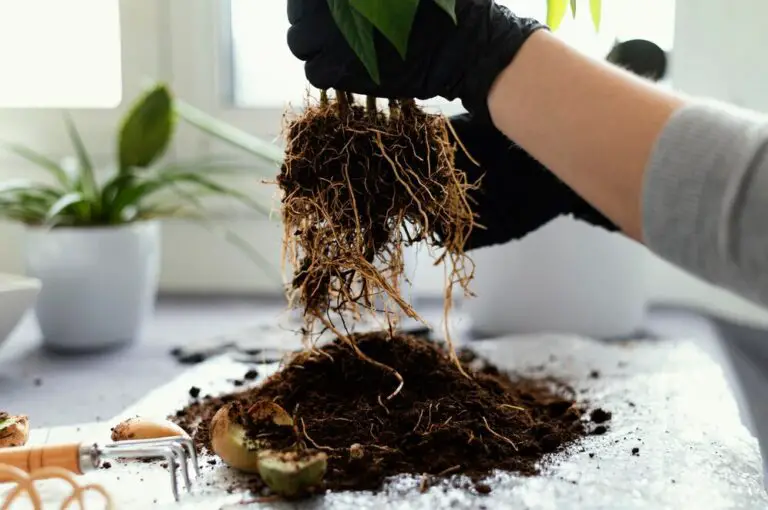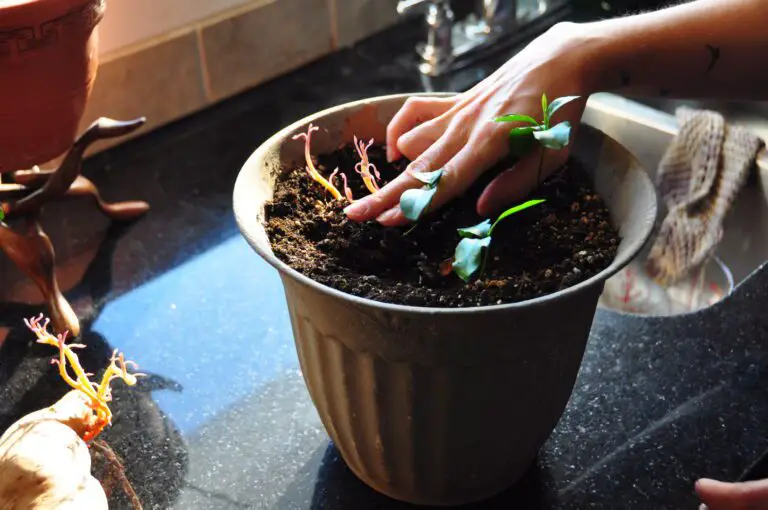Best Quick Guide to Cultivating Broccoli Microgreens
Table of Contents
What are Broccoli Microgreens?
Broccoli microgreens are young, edible seedlings that are harvested at an early stage of growth, typically around 7-14 days after planting. These miniature plants are packed with nutrients, including vitamins, minerals, and antioxidants, making them a popular choice for health-conscious individuals looking to add a nutritional boost to their diets. Broccoli microgreens are known for their distinct flavor, which can range from mild and nutty to slightly peppery, adding a flavorful punch to salads, sandwiches, soups, and a variety of other dishes.
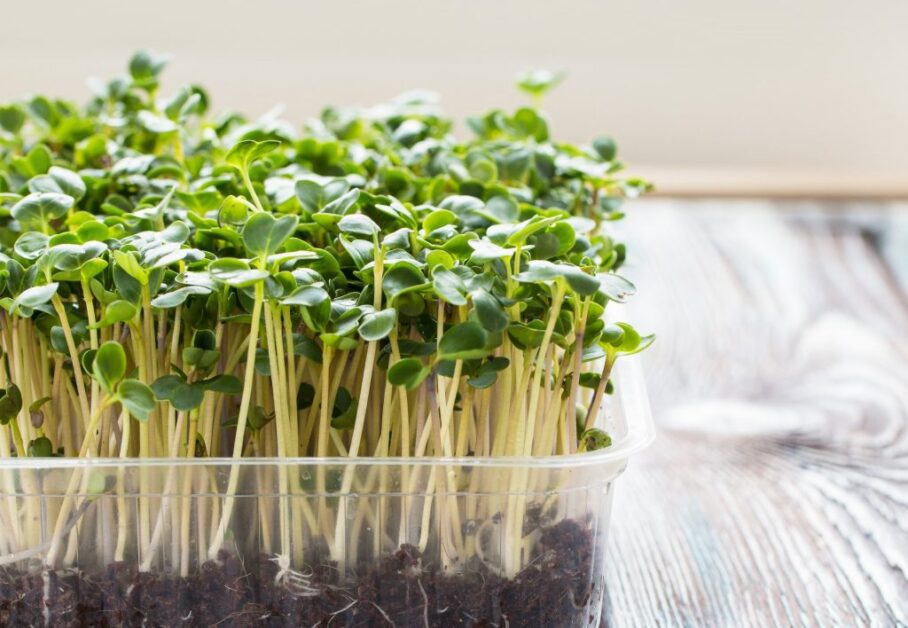
These tiny greens are easy to grow at home, requiring minimal space and resources. They are grown from broccoli seeds, which are sown densely in a shallow container or tray filled with a growing medium such as soil or a hydroponic substrate. With proper care and attention to factors like watering, light exposure, temperature, and airflow, broccoli microgreens can quickly mature into vibrant, nutrient-dense plants ready for harvest. Whether you’re a seasoned gardener or a beginner looking to explore the world of indoor gardening, growing broccoli microgreens is a rewarding and satisfying experience that brings the joys of cultivating fresh, homegrown produce right to your kitchen.
Choosing the Right Seeds
When selecting seeds for your broccoli microgreens, it is crucial to opt for high-quality, organic seeds to ensure a successful and healthy crop. Look for seeds specifically labeled for microgreen production, as they will have higher germination rates and better yields. Varieties such as ‘Green Sprouting’ or ‘Calabrese’ are popular choices known for their flavor and nutritional value.
Consider the source of the seeds as well, as reputable suppliers often provide detailed information on the seed quality, origin, and potential contaminants. Additionally, take into account the expiration date of the seeds, as fresher seeds typically have higher viability rates. Investing in premium seeds may yield better results in terms of taste, texture, and overall crop performance.
Selecting the Growing Medium
When selecting the growing medium for your broccoli microgreens, it is crucial to choose a substrate that provides adequate support for the plants while also promoting healthy root development. A common choice for growing broccoli microgreens is a sterile, soilless medium such as peat moss or coconut coir. These mediums offer good moisture retention properties and allow for proper aeration to prevent root rot.
Alternatively, hydroponic systems can also be used to grow broccoli microgreens efficiently. Nutrient-rich solutions provide all the essential elements for plant growth, ensuring optimal development and flavor in the microgreens. Remember to consider the specific needs of broccoli microgreens when selecting your growing medium to set a solid foundation for successful cultivation.
Planting Broccoli Microgreens
To plant broccoli microgreens, start by selecting a shallow container or tray with drainage holes to prevent waterlogging. Fill the container with a suitable growing medium such as vermiculite, coconut coir, or potting mix, ensuring it is moist but not waterlogged. Scatter the broccoli microgreen seeds evenly over the surface, aiming for a dense but not overcrowded layer. Gently press the seeds into the growing medium, mist with water, and cover the container with a lid or plastic wrap to create a humid environment for germination.
Once planted, place the container in a warm location with indirect sunlight. Check the moisture level of the growing medium regularly and mist as needed to keep it moist. Within a few days, you should start to see the broccoli microgreens germinating. As they grow, continue to monitor and adjust the watering schedule to ensure the seedlings are not drying out or becoming waterlogged. Remember that consistent and adequate moisture levels are key to successful growth during the planting stage.
Watering and Humidity Levels
Proper watering is essential for the successful growth of broccoli microgreens. These delicate plants require consistent moisture to thrive, but overwatering can lead to issues such as mold or root rot. It’s important to water the microgreens gently and evenly to ensure that the roots receive adequate hydration without becoming waterlogged. Monitoring the moisture levels in the growing medium regularly will help you strike the right balance and avoid any potential problems.
In addition to watering, maintaining appropriate humidity levels is crucial for the health of broccoli microgreens. These plants prefer a humid environment, as it mimics their natural growing conditions and aids in their development. Using a humidity dome or misting the plants lightly can help create the ideal level of humidity for optimal growth. By paying attention to both watering and humidity levels, you can support the healthy growth of your broccoli microgreens and ensure a successful harvest.
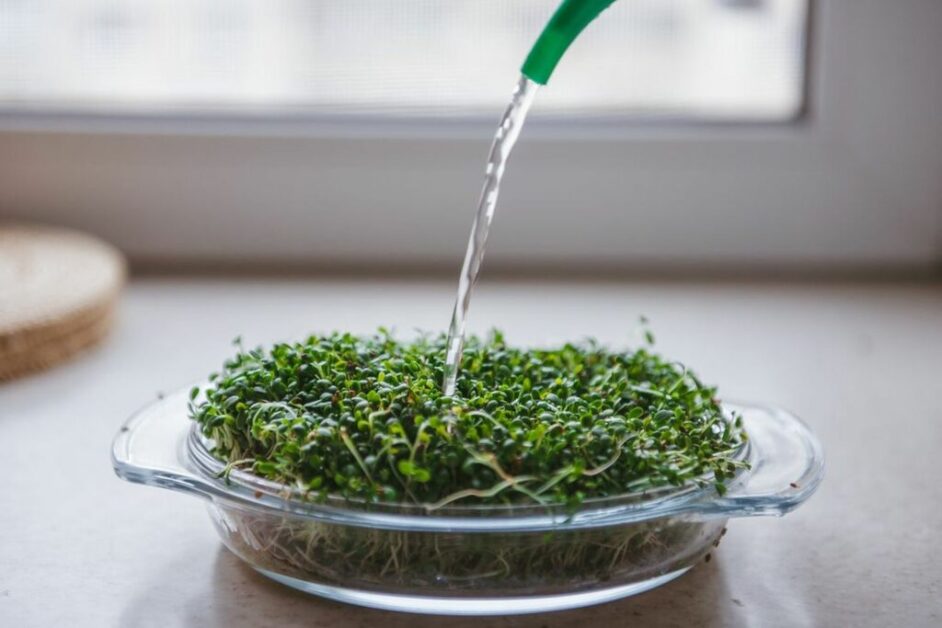
Providing Adequate Light
Broccoli microgreens require ample light to thrive and reach their full potential. When providing light for your broccoli microgreens, it’s essential to ensure they receive at least 12-16 hours of bright, indirect sunlight daily. If natural light is insufficient or inconsistent, supplementing with grow lights specifically designed for plants can help maintain optimal growth conditions.
Positioning the grow lights approximately 6-12 inches above the broccoli microgreens will prevent them from stretching towards the light source, promoting sturdy and healthy growth. Remember to adjust the lights as the microgreens grow to maintain the ideal distance for light exposure. Consistent and appropriate light levels are crucial for the photosynthesis process, allowing the microgreens to develop vibrant green leaves and robust stems.
Monitoring Growth Progress
During the growth of broccoli microgreens, it is crucial to monitor their progress regularly. Keep a close eye on the development of the tiny plants to ensure they are thriving as expected. Look for signs of healthy growth such as vibrant green color, sturdy stems, and full leaves.
Observing the growth progress of broccoli microgreens allows you to make necessary adjustments to their care regimen. By tracking their development, you can tailor watering schedules, light exposure, and nutrient levels to meet the specific needs of the plants at each stage of growth. Stay vigilant in monitoring changes in growth rate and overall health to promote successful cultivation of broccoli microgreens.
Managing Temperature
Maintaining the ideal temperature is crucial for the successful growth of broccoli microgreens. These delicate plants thrive in temperatures between 60-70°F (15-21°C) during the day and slightly cooler at night. Fluctuations outside of this range can hinder their growth and development.
Extreme heat can cause broccoli microgreens to wilt and become leggy, while cold temperatures can slow down their growth. To ensure optimal conditions, consider using a thermometer to monitor the temperature in your growing area and make adjustments as needed to provide a stable and suitable environment for your microgreens to flourish.
Fertilizing Broccoli Microgreens
To ensure the optimal growth and development of your broccoli microgreens, it is essential to provide them with the appropriate nutrients through fertilization. Broccoli microgreens require a balanced supply of essential nutrients, including nitrogen, phosphorus, and potassium, to support their growth and nutrient density. A quality, water-soluble fertilizer with a balanced N-P-K ratio, such as 20-20-20, can be used to provide the necessary nutrients for healthy microgreen growth.
When fertilizing broccoli microgreens, it is crucial to follow the manufacturer’s instructions regarding application rates and frequency. Over-fertilization can lead to nutrient imbalances, burning of the delicate microgreens, or nutrient runoff, which can harm the environment. A general guideline is to fertilize the broccoli microgreens once a week with a diluted solution of the water-soluble fertilizer, ensuring that the plants receive a sufficient but not excessive amount of nutrients for robust growth and vibrant green leaves.
Preventing Common Pests and Diseases
To prevent common pests and diseases in your broccoli microgreens, it is essential to maintain a clean and sterilized growing environment. Any contaminated equipment or trays can introduce harmful pathogens that may infect your plants. Make sure to regularly sanitize your tools and containers to minimize the risk of disease spread.
Another effective way to prevent pests and diseases is to practice proper spacing between your broccoli microgreens. Overcrowding can create a humid environment, which is conducive to the growth of molds and pathogens. By providing adequate airflow between your plants, you can reduce the likelihood of disease outbreaks. Moreover, regularly inspecting your microgreens for any signs of pests or diseases can help you catch the problem early and take necessary measures to prevent it from spreading.
The table below shows the common pests and diseases in broccoli microgreens and their preventive measures:
| Pest/Disease | Description | Prevention Method |
|---|---|---|
| Aphids | Small, sap-sucking insects that weaken plants. | Regularly inspect plants for signs of infestation. |
| Whiteflies | Tiny, white insects that feed on plant sap. | Use reflective mulch to deter whiteflies. |
| Powdery Mildew | Fungal disease that appears as white powdery spots. | Plant resistant varieties. |
| Tomato Hornworm | Large, green caterpillars that feed on tomato plants. | Handpick and destroy hornworms. |
| Tomato Blight | Fungal disease causing dark spots on tomato leaves. | Water plants at the base to avoid wetting foliage. |
Harvesting Broccoli Microgreens
When the broccoli microgreens have reached the desired height of around 1-3 inches, it is time to harvest them. Using clean scissors or a sharp knife, cut the microgreens just above the soil level. Avoid pulling them out as this can disturb the roots of the remaining plants. Cut only what you need for immediate consumption to ensure freshness and allow the rest to continue growing for future harvests.
After harvesting, gently rinse the broccoli microgreens under cold water to remove any debris or soil particles. Pat them dry with a clean paper towel or salad spinner before storing or using them. Freshly harvested broccoli microgreens have the highest nutritional value and best flavor, making them a delightful addition to salads, sandwiches, smoothies, and other dishes. Remember to store any leftovers in a sealed container in the refrigerator to maintain their freshness and crispness for a few days.
Storing and Using Broccoli Microgreens
After harvesting your broccoli microgreens, it is important to store them properly to maintain their freshness and flavor. To store broccoli microgreens, gently wash them in cold water and pat them dry with a paper towel. Place the microgreens in a container lined with a damp paper towel to help retain moisture. Store the container in the refrigerator, and make sure to use the microgreens within a few days for the best taste and texture.
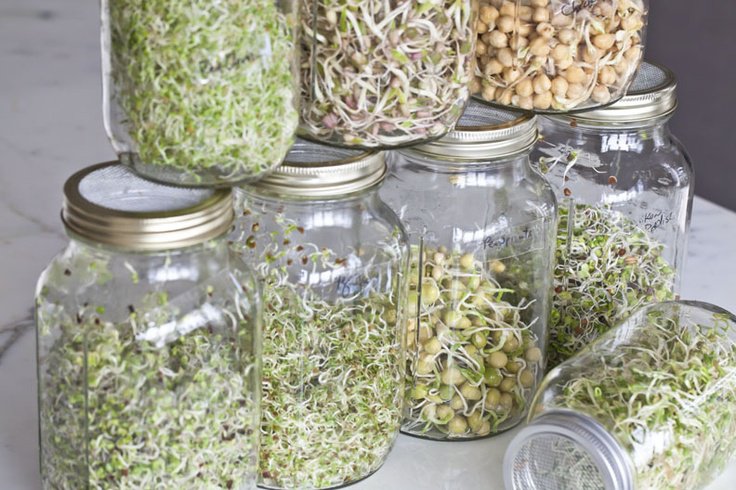
Using broccoli microgreens is a delightful way to add a burst of flavor and nutrition to your dishes. Sprinkle them on top of salads, sandwiches, omelets, or soups to add a fresh and peppery taste. Broccoli microgreens can also be blended into smoothies or used as a topping for avocado toast. Experiment with different ways of incorporating these nutrient-packed greens into your meals to enjoy their unique flavor profile and health benefits.
Tips for Success
When growing broccoli microgreens, attention to detail is crucial for optimum success. One key tip is to ensure consistent watering by misting the microgreens regularly to maintain proper moisture levels. Over-watering can lead to mold and disease, while under-watering can stunt growth and compromise the quality of the greens.
Another tip for successful cultivation is to monitor the temperature closely. Broccoli microgreens thrive in slightly cooler temperatures, ideally between 60-70°F (15-21°C). Avoid exposing them to extreme heat or cold, as this can affect their growth and overall health. By creating a stable and regulated environment with the right conditions, you can promote the healthy development of your broccoli microgreens.
Troubleshooting Common Issues
If your broccoli microgreens are not growing as expected, there are a few common issues you may encounter. One possible problem could be inadequate light exposure. Broccoli microgreens require ample sunlight or artificial light to thrive. Ensure they are receiving at least 12-16 hours of light daily to promote healthy growth.
Another issue to watch out for is overwatering. Excess moisture can lead to root rot and other fungal diseases in broccoli microgreens. Make sure to water your microgreens sparingly and allow the growing medium to partially dry out between waterings to prevent waterlogged conditions.
The table below shows how to troubleshoot some of the common issues during the broccoli microgreen cultivation:
| Common Issue | Description | Troubleshooting Measures |
|---|---|---|
| Slow Germination | Seeds taking longer than expected to sprout. | -Ensure consistent moisture levels during germination. -Verify that seeds are fresh and viable. -Provide adequate warmth for germination (around 70°F). |
| Yellowing Leaves | Leaves turning yellow instead of vibrant green. | -Check for overwatering, ensure proper drainage. -Provide sufficient light, adjust lighting if necessary. -Check pH levels of growing medium (around 6.0 to 6.5). |
| Leggy Growth | Thin, elongated stems with sparse foliage. | -Increase light intensity or duration. -Ensure proper air circulation to strengthen stems. -Avoid overcrowding seeds when sowing. |
| Mold or Fungal Growth | Fuzzy growth on soil surface or on microgreen stems. | -Reduce humidity levels in growing area. -Increase air circulation around plants. -Avoid overwatering, water from the bottom if possible. |
| Wilting or Drooping | Microgreens appear limp and unhealthy. | -Check soil moisture levels, water if dry. -Ensure proper drainage to prevent waterlogging. -Provide adequate light and avoid excessive heat. |
| Nutrient Deficiency | Yellowing or stunted growth due to lack of nutrients. | -Adjust nutrient solution according to plant needs. -Ensure proper pH levels in nutrient solution. -Consider adding a balanced fertilizer if necessary. |
Benefits of Growing Broccoli Microgreens
Broccoli microgreens are a powerhouse of nutrition, packing a concentrated punch of vitamins, minerals, and antioxidants. These tiny greens are rich in essential nutrients such as vitamin C, vitamin K, and fiber, making them a valuable addition to your diet. Studies have shown that broccoli microgreens contain higher levels of certain nutrients compared to mature broccoli, making them a superfood that can support overall health and well-being.
Moreover, the process of growing broccoli microgreens at home is not only rewarding but also cost-effective. By cultivating these nutrient-dense greens in your own space, you can have a fresh and healthy supply at your fingertips, ensuring that you are consuming the freshest and most nutrient-rich greens possible. Whether added to salads, sandwiches, smoothies, or used as a garnish, broccoli microgreens can elevate the flavor and nutritional content of your dishes, promoting a healthier lifestyle.
Watch the video to get the best tips for growing broccoli microgreen at home.
Can broccoli microgreens be grown indoors?
Yes, broccoli microgreens can easily be grown indoors as long as they have access to adequate light and the right growing conditions.
How long does it take for broccoli microgreens to be ready for harvest?
Broccoli microgreens typically take around 7-14 days to be ready for harvest, depending on the growing conditions and the specific variety of seeds used.
Can broccoli microgreens be grown without soil?
Yes, broccoli microgreens can be grown hydroponically or using a soilless growing medium like coconut coir or vermiculite.
Are broccoli microgreens high in nutrients?
Yes, broccoli microgreens are packed with nutrients such as vitamins
Can broccoli microgreens be frozen for later use?
Yes, broccoli microgreens can be frozen for later use, although they are best used fresh for optimal flavor and texture.
How can I incorporate broccoli microgreens into my diet?
Broccoli microgreens can be added to salads, sandwiches, smoothies, soups, and even used as a garnish for various dishes to add a nutritional boost to your meals.



